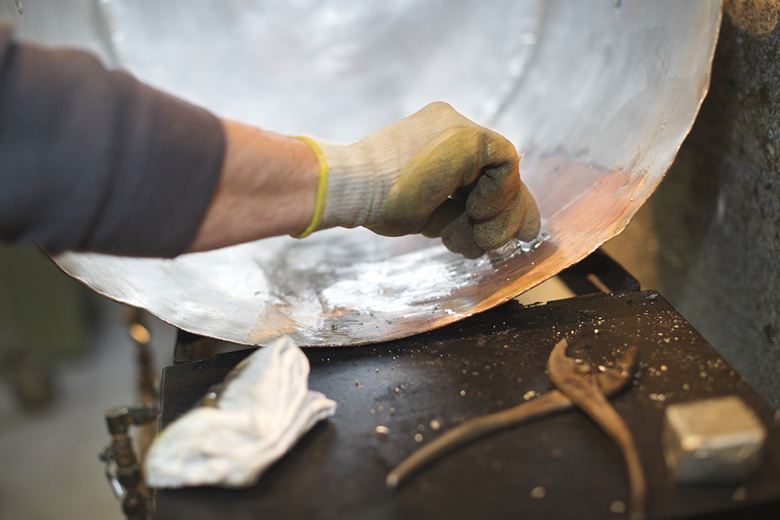
“I love this pot. But if I cannot use this pot, I do not want this pot,” Linda Troia said to her boyfriend, Jim Hamann, after having spotted the battered copper stockpot way high up on a shelf in a sleepy town in Burgundy, France. “Can you fix this pot?” Hamann brought out his rusty French to confer with the antique shop owner; a short time later he turned to Troia to say, “I can fix this pot.” And the seeds of an enterprise were sown. Today, the restored copper wares from East Coast Tinning have found their way into kitchens worldwide, from Eleven Madison Park to those of many a discriminating cook and chef.
But first came much research, sweat and toil. Back stateside from the fateful trip, Hamann (a mechanical engineer by training) busily set about fulfilling his promise in his backyard in Rhode Island with the stockpot, a giant lobster cooker, a tin ingot, flux and a cloth in tow. It took eight tries before he could meet the standards of his loving if exacting partner: “I would cook in that pot,” Troia said at last. He soon began to offer his restoring services on eBay for collectors of heirloom copper ware. Word of mouth took over and soon his business took off.
By and by, after restoring countless pots of yore and many moments of “They just don’t make ’em like they used to,” Jim decided to extend his resurrecting activities to the art of traditional pot-making as well and, in 2008, formed Duparquet Copper Cookware. The name is an homage to a mid-19th-century brand that, like its contemporaries, featured thick copper bodies, lush tin-lined interiors, cast-iron handles and hefty rivets. And like its namesake, the modern Duparquet carries on this practice, manufacturing “heirloom-quality copper cookware,” from sauté, fry and sauce pans to bowls and even copper-inlaid knives.
Both operations have received glowing praise and have been finalists for Martha Stewart American Made awards in exceptional design.
While keeping select trade secrets to himself, Jim walked us through his alchemical process of turning worn antique cookware to gleaming copper and tin brilliance.

Upon our arrival, we’re greeted at the studio door by a giant (20- by 20-inch) stockpot that saw use in the kitchens of New York’s old-timey Knickerbocker Club. It’s the largest single piece Hamann’s ever worked on. He’s prepped it for our arrival so that just a final interior section needs to be tinned. Note the tin ingots at left that will soon be put to this use; also note the spigot that suggests the pot was once used for consommé.
Here, some details from the giant stockpot show some of what Hamann’s up against while restoring:


















